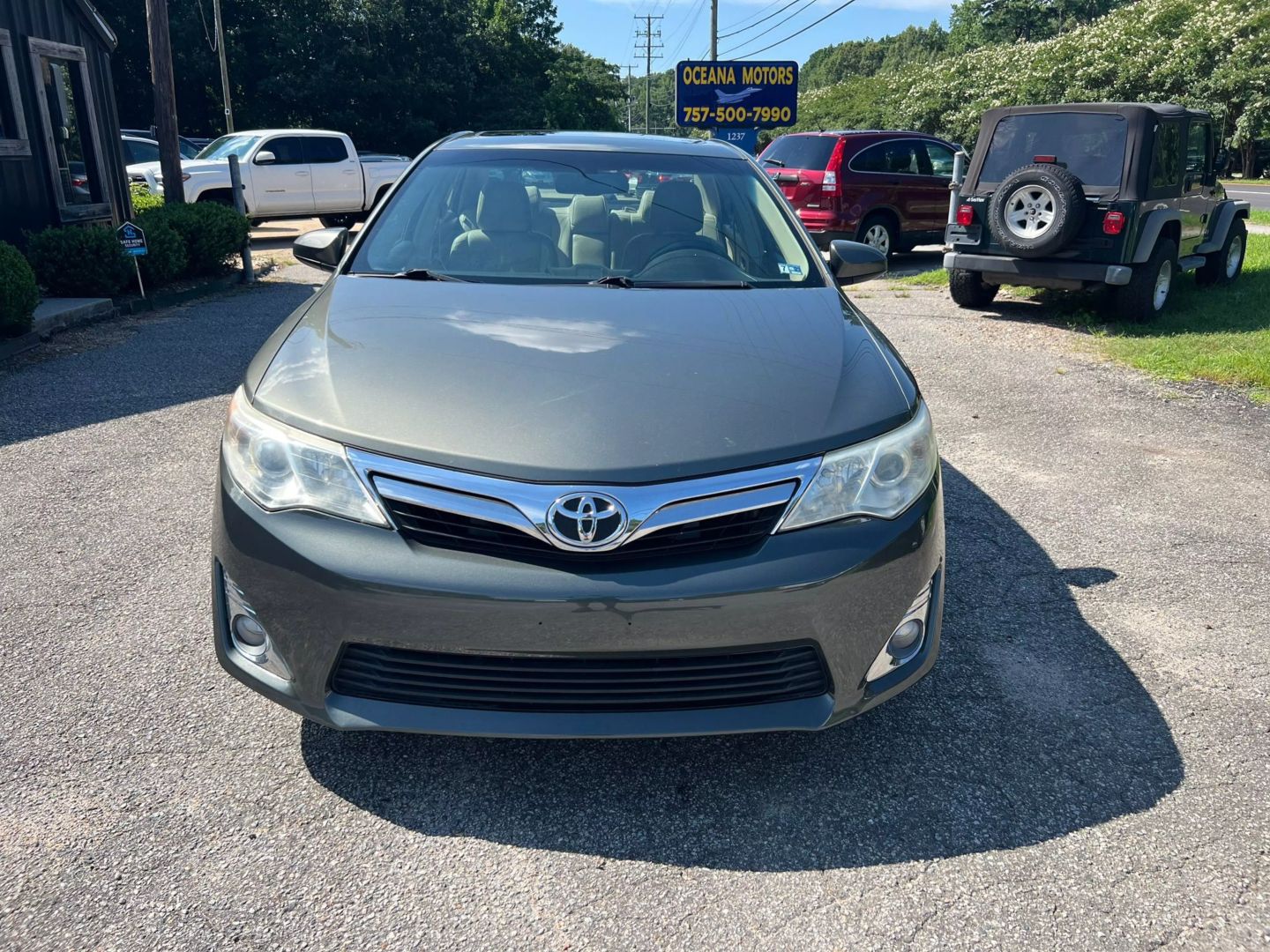As new car prices continue to rise and inflation keeps squeezing budgets, finding a dependable used car under $10,000 in 2025 isn’t easy—but it’s definitely doable. The trick is knowing which models have a proven track record for reliability and low long-term ownership costs.
Whether you’re a student, commuter, or just need a backup vehicle, here are ten cars that continue to punch above their weight in today’s used market. These models offer strong value, easy maintenance, and decent availability at or below the $10K mark—if you shop smart.
1. 2012–2014 Toyota Corolla
The Toyota Corolla is the ultimate no-drama car. Known for its rock-solid reliability and fuel efficiency, this model is a smart buy for anyone needing a worry-free daily driver.
Parts are cheap, maintenance is straightforward, and there’s a massive support network of mechanics familiar with these cars. Models from 2012 to 2014 are especially strong, with minimal common issues. You can expect to find examples with 90,000 to 130,000 miles within this budget.
The used 2012 Toyota Corolla is a dependable compact sedan offering a balanced mix of fuel efficiency, comfort, and affordability. Powered by a 1.8-liter inline 4-cylinder gas engine, it comes with a 4-speed shiftable automatic transmission and front-wheel drive.
The LE 4-door sedan trim, which is among the most popular choices, has a starting MSRP of $17,910 when new. This model delivers a combined 29 MPG, with EPA ratings of 26 MPG in the city and 34 MPG on the highway, and runs on regular unleaded fuel. Operating costs are modest, with an estimated $131 per month for fuel.
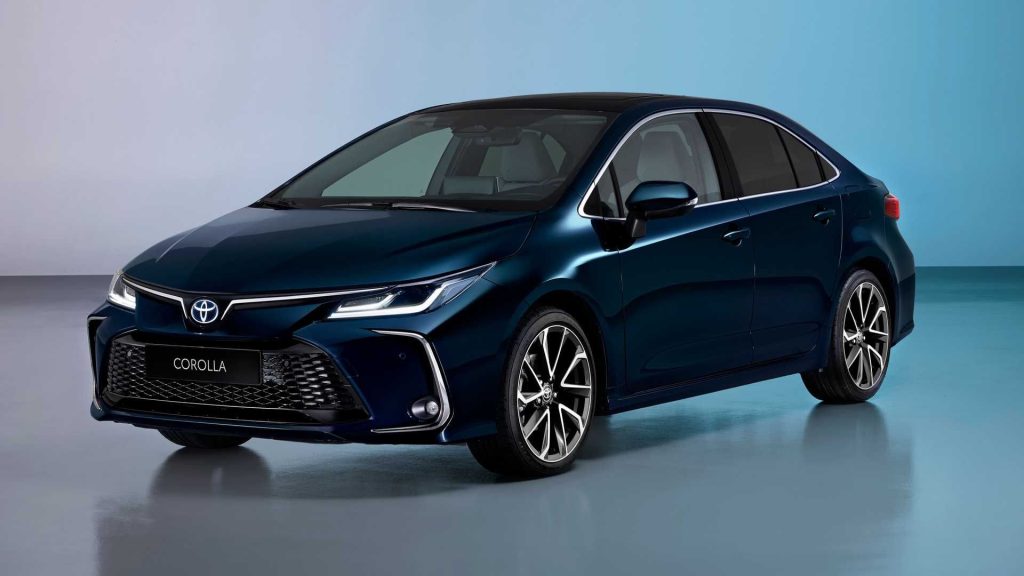
Inside, the Corolla seats up to five passengers, offering a cargo capacity of 12.3 cubic feet. It has a curb weight of 2,800 lbs and comes with a basic warranty of 3 years or 36,000 miles.
Depending on the specific unit, the country of final assembly may be Canada, Japan, or the United States. In terms of towing, the vehicle supports a maximum towing capacity of 1,500 lbs, which is adequate for light-duty needs like small trailers or utility carriers.
Currently, used 2012 Toyota Corolla LE sedans can be found on the market at accessible price points. For instance, three listings show prices of $11,999, $7,900, and $6,900, respectively. These figures make it a compelling option for anyone seeking a reliable vehicle under $10,000 in 2025, especially when value, efficiency, and long-term dependability are top priorities.
Also Read: 5 Used Trucks With Low Ownership Cost and 5 That Drain Savings
2. 2010–2013 Honda Civic
The Civic is a go-to for good reason: it’s fuel-efficient, fun to drive, and practically immortal if you stay on top of oil changes. These models balance reliability with a more engaging driving experience than most economy cars.
One caution: lots of Civics have been modified or thrashed, so avoid anything with aftermarket parts unless you know what you’re doing. Solid ones in the 100,000 to 140,000-mile range are still easy to find.
The 2013 Honda Civic is a clear example of how seriously Honda takes customer feedback. After a complete redesign in the prior year received criticism for being too modest to compete effectively in the crowded compact car segment, Honda responded quickly with a series of targeted improvements that directly address the shortcomings of the previous model.
One of the most noticeable updates comes in the form of exterior styling changes. The Civic now sports a more athletic and distinctive look, helping it stand out compared to the previous generation.
Inside, the improvements are just as significant. Many of the low-grade plastics that drew negative attention have been replaced with higher-quality materials that offer a more upscale appearance and tactile experience. However, the overall cabin design remains largely unchanged, which means it still lags behind some competitors in visual appeal and sophistication.
Equally noteworthy is the expansion of standard features in the cabin. New standard equipment includes Bluetooth, a rearview camera, text message functionality, an iPod interface, and Pandora functionality.
These features are often optional extras in rival vehicles, so their inclusion in the base Civic adds real value for budget-conscious shoppers.
Under the hood and beneath the surface, there are several mechanical upgrades. Honda has retuned the suspension and steering to improve handling responsiveness. Additional sound-deadening materials were added to reduce road noise and deliver a quieter, more refined driving experience.
In terms of safety, the 2013 Civic features an updated body structure designed to offer enhanced frontal impact protection. The front-seat side airbags have also been revised, and for the Civic Hybrid, optional forward collision warning and lane departure warning systems are now available—advanced features that are seldom seen in this price range.
Thanks to these changes, the 2013 Honda Civic is now much better equipped to compete with its rivals, which makes the compact car segment even more compelling.
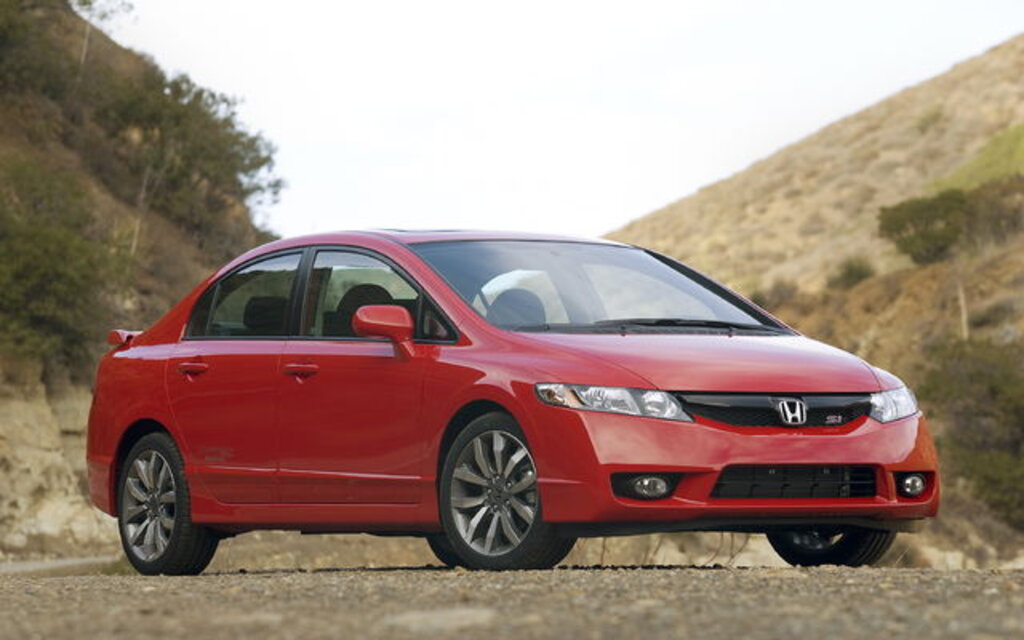
That said, it’s still worth checking out other top contenders like the 2013 Ford Focus, 2013 Hyundai Elantra, and Mazda 3, all of which deliver competitive levels of value, features, and cabin quality.
For those interested in a hybrid model, the Toyota Prius C and Volkswagen Jetta Hybrid are solid alternatives. Meanwhile, enthusiasts considering the Civic Si might want to test drive sportier options like the Ford Focus ST, Mazdaspeed 3, or Volkswagen GTI, which tend to outperform the Civic in key performance metrics.
Overall, though, Honda has made a strong comeback with the 2013 Civic. The updates have made it a top contender once again for anyone shopping for a reliable and well-rounded compact sedan or coupe.
The 2013 Honda Civic with front-wheel drive is equipped with a 1.8-liter four-cylinder engine producing 140 horsepower and 128 pound-feet of torque. It offers two transmission choices: a five-speed manual or an available five-speed automatic (standard on HF and EX trims).
The Civic Natural Gas model uses a modified version of the same 1.8-liter engine, running on natural gas. This setup generates 110 hp and 106 lb-ft of torque, and comes exclusively with a five-speed automatic transmission. The EPA rates its fuel economy at the gasoline equivalent of 27/38/31 mpg.
For the Civic Hybrid, Honda pairs a 1.5-liter gasoline four-cylinder engine with an electric motor, delivering a total of 110 hp and 127 lb-ft of torque.
It uses a continuously variable automatic transmission (CVT). In Edmunds testing, the Hybrid reached 60 mph in 10.1 seconds, which aligns with most hybrid economy cars. Unsurprisingly, this model is the most fuel-efficient of the lineup, achieving EPA-rated 44/44/44 mpg.
Finally, the Civic Si is powered by a performance-tuned engine producing 201 hp and 170 lb-ft of torque, paired exclusively with a six-speed manual transmission. EPA estimates for the Si stand at 22 mpg city / 31 mpg highway / 25 mpg combined.
3. 2011–2014 Mazda3
If you want reliability without sacrificing driving feel, the Mazda3 is a great option. These cars are fun, nimble, and built to last—especially the 2.0L engine versions. However, earlier models are known for rust issues in northern climates and some wear on suspension components. Still, a clean example with 90,000 to 130,000 miles is well worth your money.
One of the most well-regarded compact cars on the market receives a significant overhaul this year. The 2014 Mazda3 is completely redesigned, boasting bold, modern styling along with an impressive lineup of infotainment and tech upgrades, plus updated powertrains.
Offered in both sedan and four-door hatchback body styles, the base engine for the 2014 Mazda3 is a 2.0-liter inline-four producing 155 horsepower and 150 lb-ft of torque.
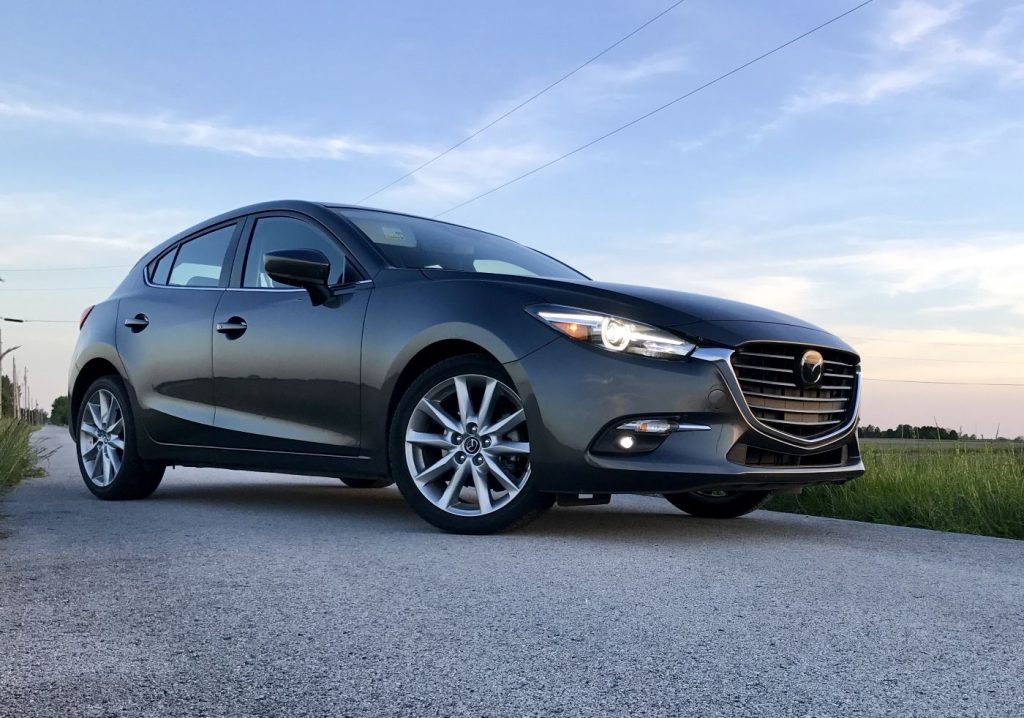
For those seeking more power, an optional 2.5-liter inline-four delivers 184 horsepower and 185 lb-ft of torque. Both engine options can be paired with either a six-speed manual transmission or a six-speed automatic.
In terms of fuel efficiency, the 2014 Mazda3 sedan equipped with the 2.0-liter engine is rated at 29 mpg city and 41 mpg highway when paired with the manual transmission, and 30/41 mpg city/highway with the automatic.
As for performance enthusiasts, at least for the 2014 model year, the Mazdaspeed3 hot hatch carries over unchanged from the previous generation. It continues to be powered by a 2.3-liter turbocharged inline-four that produces 263 horsepower, maintaining its place as the high-performance variant in the lineup.
4. 2010–2012 Toyota Camry
The Camry is the definition of a solid midsize sedan. With a smooth ride and ultra-durable 4-cylinder engine, these models have been top picks for years.
The V6 version has more power, but unless you specifically need it, the 4-cylinder is easier and cheaper to maintain. Many Camrys from this era will have 100,000 to 150,000 miles, and that’s perfectly fine if it’s been maintained properly.
The 2010 Toyota Camry features a strong lineup of engines, a smooth and composed ride, and a spacious interior, making it a practical choice in the midsize sedan segment.
However, its less engaging handling and unremarkable interior materials prevent it from climbing higher in midsize car rankings. Among its key advantages are a “spacious interior” and a “comfy, smooth ride.” On the flip side, drawbacks include a “not the most exciting ride” and a “bland cabin styling.”
Several updates were introduced for the 2010 model year. These include standard electronic stability control, an updated four-cylinder engine that provides more power and improved fuel efficiency, and six-speed manual and automatic transmissions, which replaced the older five-speed units.
The Camry seats five passengers and offers front-wheel drive, with horsepower ranging from 169 to 268, depending on the engine. Fuel economy falls between 19-22 mpg in the city and 28-33 mpg on the highway.
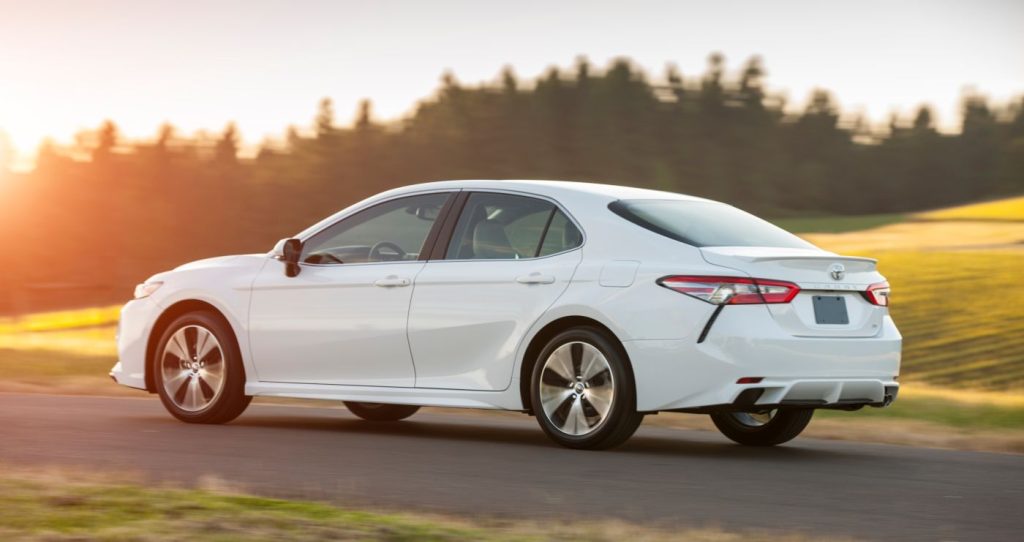
The 2010 Toyota Camry is available in several trim levels, and visual highlights include both interior and exterior views, such as the angular front and rear, dashboard, front and rear seating, and side profile. A full gallery of 25 photos is available for buyers who want a detailed look.
When it comes to pricing, based on nearly 290 listings, the 2010 Toyota Camry ranges in price from approximately $6,300 to $12,200, with an average listing price of about $8,900, which is slightly above the segment average. Final pricing will vary based on vehicle condition, mileage, trim, features, and geographic location.
As for ownership costs, the estimated five-year total for fuel, insurance, maintenance, and repairs comes to approximately $23,350, or about $4,670 per year. These ownership expenses are lower than what many competitors require.
If you’re weighing the pros and cons of buying a used Camry versus a new one, consider that the fully redesigned 2018 Toyota Camry starts at $23,645.
It offers numerous enhancements, such as standard advanced safety tech—including a pre-collision warning system and adaptive cruise control—along with more powerful engines, sharper handling, and improved fuel efficiency. However, if these upgrades don’t justify the significantly higher price for you, sticking with the more affordable 2010 Camry may be the smarter move.
5. 2011–2013 Hyundai Elantra
Hyundai made a big leap in quality with the Elantra during these years. Stylish, fuel-efficient, and often underappreciated, it’s a great bargain if you find one that’s been taken care of. Watch out for reports of sluggish transmission behavior—test drive is key. Good examples with 70,000 to 120,000 miles are out there under $10K.
Rather than giving the fourth generation Elantra, which debuted in 2006, a simple facelift, Hyundai accelerated the release of its successor and introduced the fifth generation of the nameplate in April 2010.
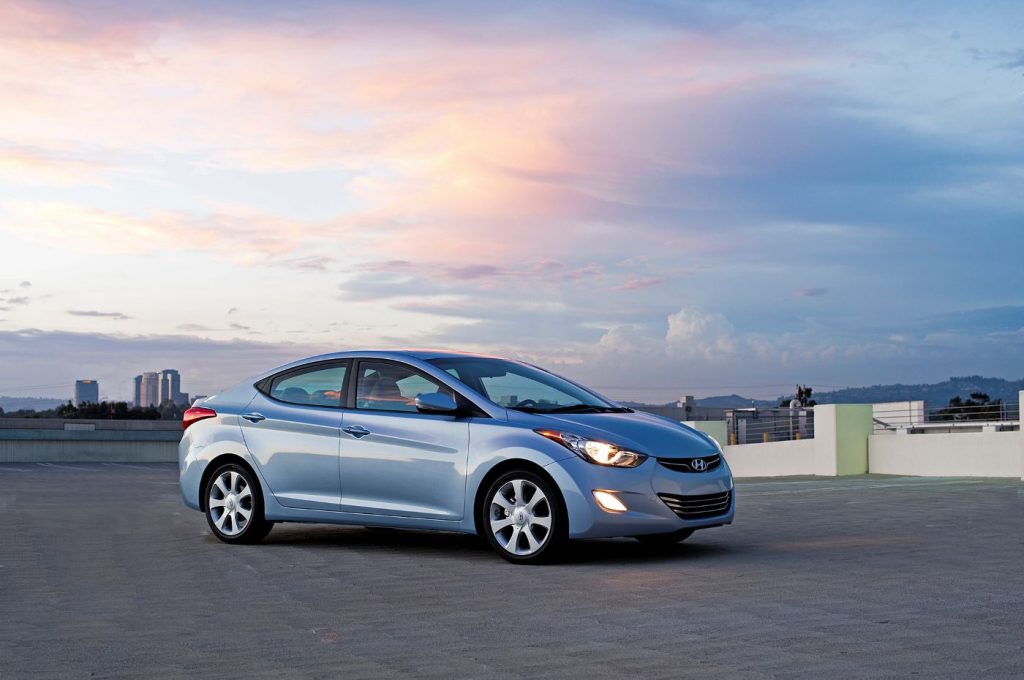
The decision to launch an entirely new model instead of refreshing the old one came despite the backdrop of the global financial crisis, which had crippled many automakers. Hyundai’s engineers burned the midnight oil to launch the fifth generation of the Elantra despite the world financial crisis that brought more carmakers to their knees.
During this period, Hyundai managed to thrive largely due to a smart pricing strategy and a diversified product lineup that appealed to a wide customer base. The brand also benefited significantly from the launch of a new design language, which helped it gain stronger traction in several key global markets.
This was particularly evident in the United States, where Hyundai’s market share grew from 2.8% to 4.6% between 2006 and 2010, ultimately helping the company—along with its affiliate Kia—become the sixth-largest car manufacturer in the world.
6. 2012–2014 Ford Fusion
The Fusion is a comfortable, tech-friendly midsize car that punches above its weight. Avoid the EcoBoost and V6 models unless you’re prepared for more upkeep; the naturally aspirated 4-cylinder is the smarter choice. These cars typically show up with 90,000 to 130,000 miles at this price, and with basic maintenance, they can last much longer.
The car’s impressive performance begins with its vehicle architecture, which provides a well-calibrated balance between ride comfort and responsive handling. The Fusion keeps you connected to the road, but it manages to do so without sacrificing comfort—a compromise that many of its competitors struggle with.
While the interior may not dazzle with visual flair and the climate controls are positioned a bit too low for optimal ease of use, the Fusion redeems itself with solid construction quality and good materials throughout. Inside the cabin, you’ll find all the standard features expected in this segment, plus a few advanced tech additions that enhance its appeal.
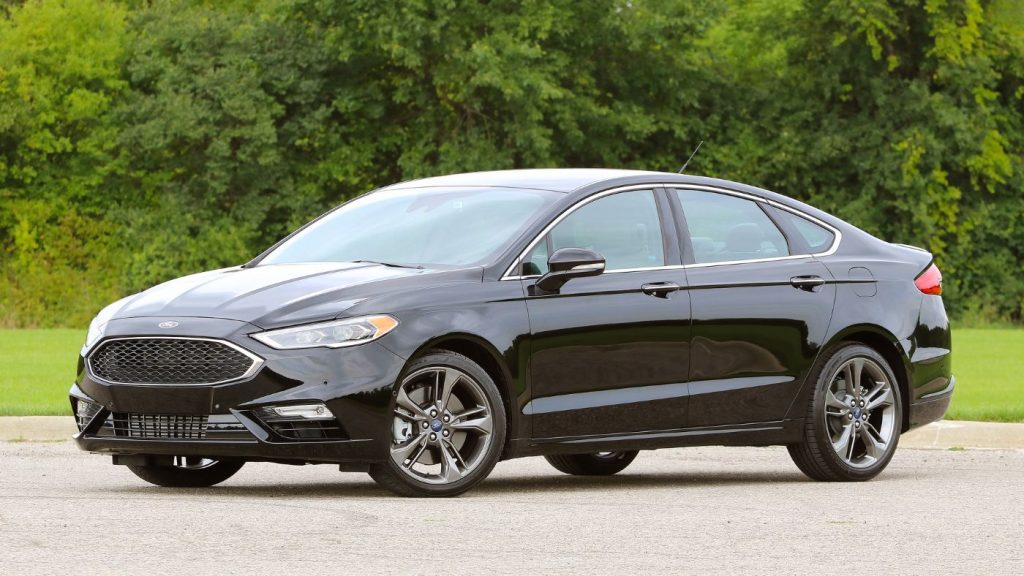
Under the hood, the Fusion distinguishes itself from much of the competition. While the base engine—a 175-horsepower four-cylinder—is typical for the class, the Fusion offers two V6 options instead of the usual single upgrade.
The standard 3.0-liter V6 puts out 240 horsepower, which is somewhat underpowered compared to rivals, but the Fusion Sport variant offers a more robust 263-horsepower V6, which delivers much stronger performance while maintaining nearly the same fuel efficiency as the smaller V6. In short, if you want V6 power in your Fusion, we’d suggest the Sport.
Meanwhile, the 2012 Ford Fusion Hybrid is powered by a 2.5-liter four-cylinder gasoline engine paired with an electric motor, producing a combined 191 horsepower.
The EPA estimates fuel economy at 41 mpg city and 36 mpg highway, which are impressive figures within the midsize hybrid sedan segment. What truly sets the Fusion Hybrid apart is how natural it feels on the road—its driving dynamics are pretty much vice-free; it drives pretty much just like a regular Fusion.
7. 2010–2012 Honda Accord
Bigger than a Civic and just as reliable, the Accord blends comfort with dependability. These years are known for strong build quality and solid engines. Again, the 4-cylinder is the safer long-term option over the V6. With proper care, an Accord with 100,000 to 140,000 miles is just hitting its stride.
The 2010 Honda Accord features agile handling and a spacious, well-built interior that gives it a refined feel. Despite these strengths, it ranks in the middle of the competitive midsize car segment. This is largely because its safety and reliability ratings, although commendable, don’t quite match those of the class leaders.
The Accord boasts several advantages, including an upscale, roomy cabin and solid overall performance. However, it’s not without its flaws. The optional navigation system can be confusing to use, the center stack is cluttered, and the trunk space falls short compared to rivals.
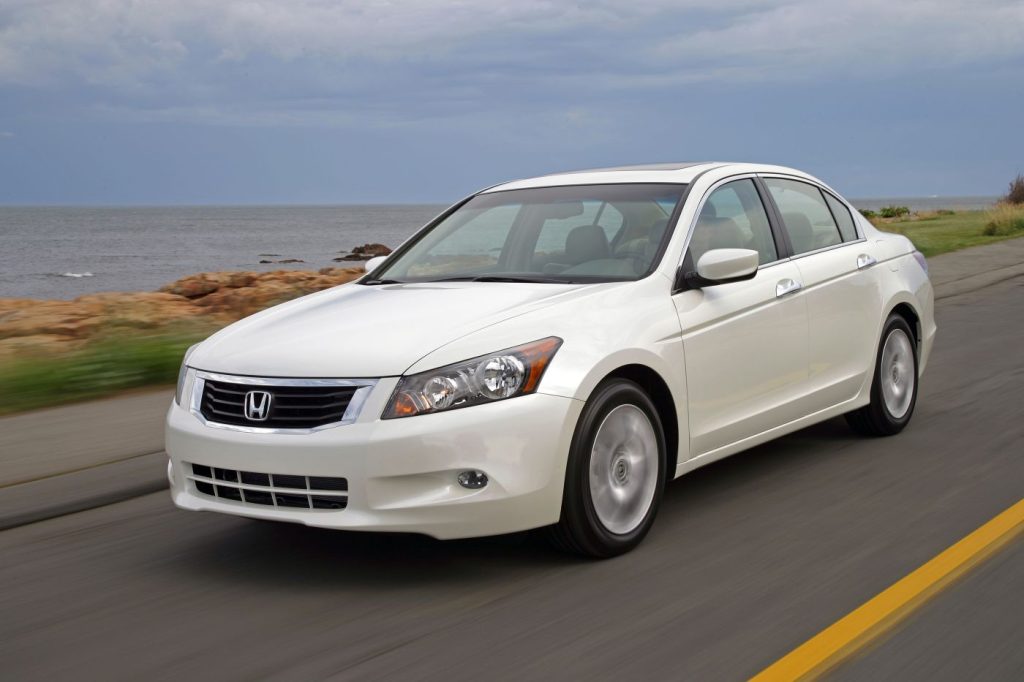
For 2010, the Honda Accord was fully redesigned. It seats five people, offers front-wheel drive, and has a horsepower range between 177 and 271. Fuel economy is estimated at 17-22 mpg in the city and 25-31 mpg on the highway, depending on the configuration. A full list of specifications is available for those wanting to dive deeper.
Photo galleries for the 2010 Accord include images of the angular front, angular rear, dashboard, front seat, side view, and rear seat, offering both exterior and interior views. In total, there are 25 photos available for viewing.
Yes—it stands out with one of the most polished interiors in the segment, combining sleek design and high-quality materials. It also handles more nimbly than many competitors, making it more engaging to drive on twisty roads.
That said, it’s not perfect. Its trunk is on the small side for a midsize sedan, and the optional navigation system’s control knob can be frustratingly difficult to operate.
8. 2011–2013 Subaru Impreza (Manual)
If you need all-wheel drive, the Impreza stands out in this list. It’s compact, practical, and great in bad weather. But here’s the catch—Subaru’s automatic CVTs are a weak point.
Look for a manual transmission model, which tends to be more durable. Models with 90,000 to 130,000 miles are within budget, but make sure it has a clean service history, especially regarding head gaskets.
The 2011 Subaru Impreza distinguishes itself in the compact car segment by offering standard all-wheel drive, a feature that’s rare among its competitors. This drivetrain provides strong performance and confident handling, making the Impreza a dependable option for small car shoppers in 2011.
Power comes from a 2.5-liter four-cylinder engine delivering 170 horsepower across all trims. Many reviewers noted that this engine provides sufficient power for daily driving. However, for those who seek more spirited performance, the higher-end WRX and WRX STI variants are recommended, offering significantly enhanced driving dynamics along with excellent safety ratings.
While the Impreza’s standard all-wheel drive is a key selling point, it comes with a trade-off: fuel economy suffers, with EPA estimates reaching just 20 mpg in the city and 26–27 mpg on the highway—lower than many rivals in this class.
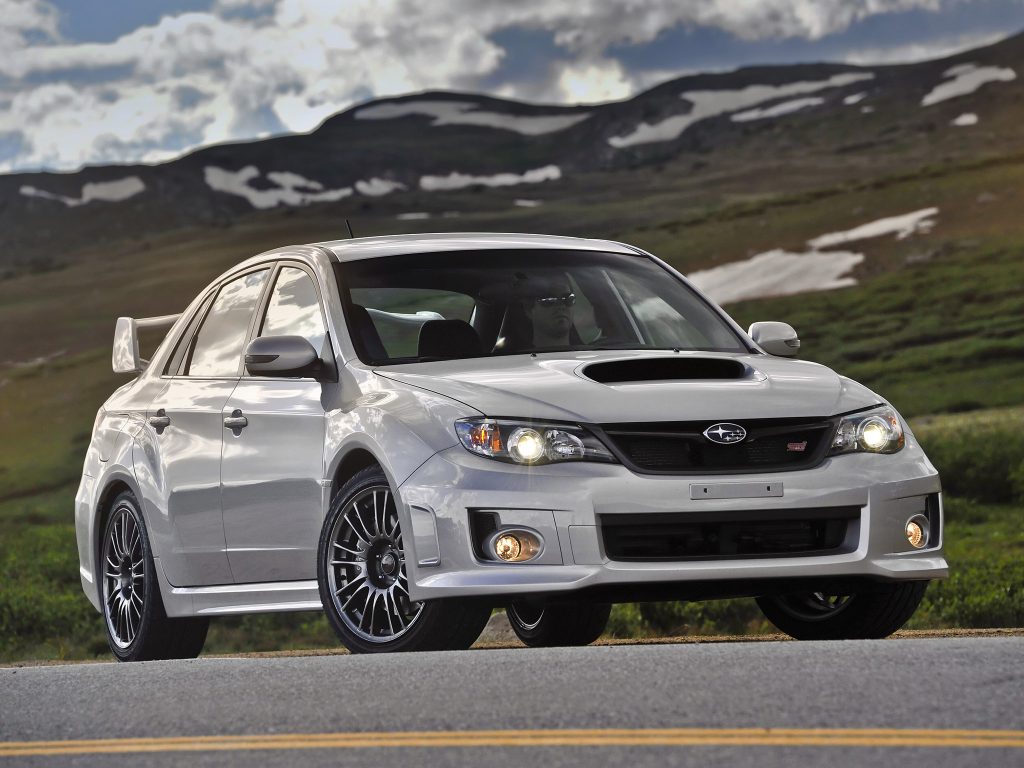
Inside, the Impreza features a spacious cabin with good rear-seat room for passengers. The hatchback model, in particular, offers generous cargo space, making it the more practical choice over the sedan, which has limited trunk capacity. However, the interior of the base model feels minimalistic.
Standard features include a stereo system and air conditioning, but to get modern conveniences like Bluetooth, a USB port, or navigation, buyers must step up to a higher trim level. For 2011, Subaru added a TomTom navigation system as an optional feature, while upper trims gained standard Bluetooth and USB connectivity.
Safety is one of the Impreza’s strong suits. It boasts high safety scores and a solid list of standard safety equipment, contributing to its appeal for families and safety-conscious drivers. The Impreza also performs well in overall value. It earned a score of 8.3 out of 10 in the 2011 Compact Cars category, based on 38 expert reviews and data points.
In terms of ownership costs and reliability, the 2011 Impreza scores well, with particularly high marks for safety and cost of ownership. The design may not be flashy, and fuel economy lags behind the competition, but if you’re looking for a compact car with standard all-wheel drive, solid performance, and high safety ratings, the 2011 Subaru Impreza remains a compelling choice.
9. 2012–2015 Chevrolet Cruze
The Cruze offers good fuel economy and a quiet, comfortable ride. It’s not the toughest car on the list, but if you find one with a clean bill of health, it’s decent value. Keep an eye on turbo models for cooling system and boost-related issues. If you’re careful, you can snag one with 80,000 to 120,000 miles in solid condition.
In the past, our recommendations in the compact car segment typically included options like the Honda Civic, the Mazda 3, or, for those seeking something a bit more unconventional, the Subaru Impreza. However, the landscape for small cars has shifted dramatically, and leading this change is the 2012 Chevrolet Cruze.
After debuting the previous year as an all-new model, the Cruze has proven itself both in terms of strong sales and critical acclaim. There are many reasons for its success, but at the core, the Cruze stands out as a genuinely high-quality vehicle.
Its design is appealing both inside and out, and the car’s craftsmanship is evident from the moment you close the door and hear the reassuring “thunk.” Modern features are also part of the package, including options like hard-drive-based navigation and keyless ignition and entry—clear signs that Chevrolet has come a long way from the days of the Cobalt.
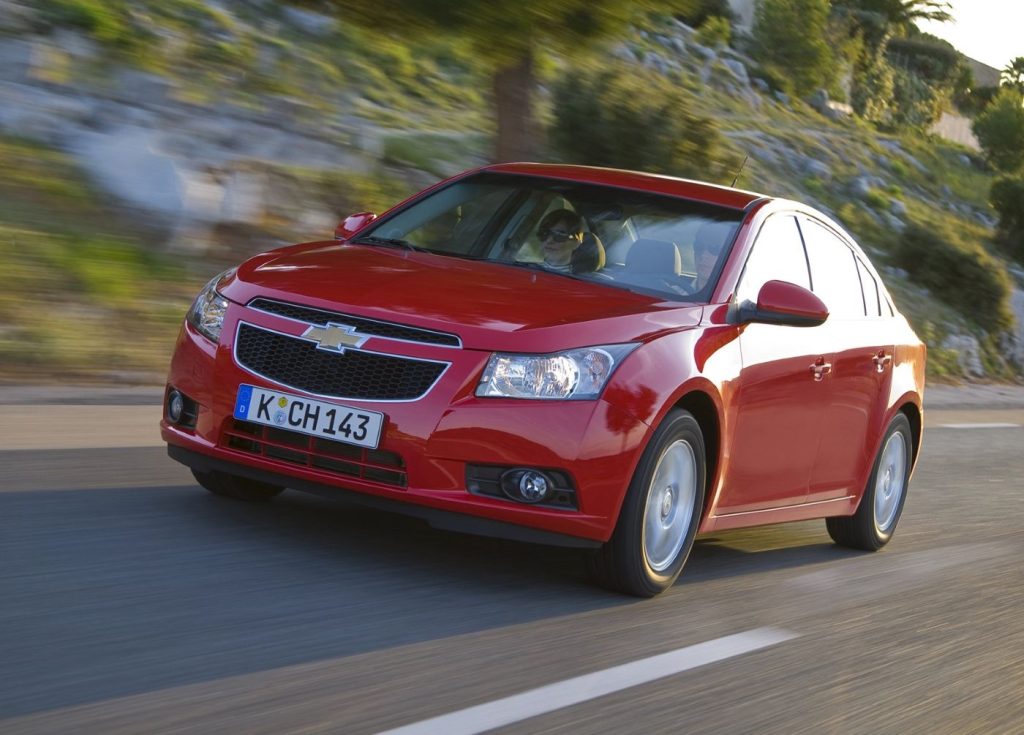
On the road, the 2012 Chevrolet Cruze delivers competent handling and a pleasantly quiet ride. Buyers can choose between two engines. The base LS trim is equipped with a 1.8-liter four-cylinder producing 136 horsepower, while most other Cruze models feature a smaller, turbocharged 1.4-liter engine.
Although the turbo engine only slightly increases horsepower to 138, it significantly boosts torque, resulting in noticeably better low-speed acceleration. This same engine powers the Cruze Eco model, which, thanks to aerodynamic improvements and other enhancements, earns an EPA highway rating of 42 mpg—impressive for its class.
Even so, it’s still wise to consider rival models. The recently redesigned Ford Focus is equally compelling, especially with its sharp handling and advanced tech features. The Hyundai Elantra, with its bold styling and balanced performance, also makes a strong case, especially when value is taken into account.
And while the Honda Civic and Mazda 3 may no longer dominate the class as they once did, they remain excellent choices. Nonetheless, the compact car market has evolved, and the Chevrolet Cruze has firmly established itself as one of its top contenders.
10. 2011–2014 Nissan Sentra
The Sentra is a basic, no-frills compact car, but it does what it’s supposed to: get you from A to B with minimal fuss. The main concern is the CVT transmission—make sure the one you’re buying shifts smoothly with no whining or delay. With proper vetting, you can find these with 80,000 to 110,000 miles under the $10K threshold.
As one of Nissan’s longest-standing nameplates, dating back to 1985, the Nissan Sentra has long been associated with strong value, dependable performance, and impressive economy and reliability.
For shoppers in the small car market, the Sentra often topped the list of considerations. This was especially true of the SE-R model, which made its debut in 1991. It came equipped with a 140-horsepower 2.0-liter engine, a limited-slip differential, and a sport-tuned suspension, earning it instant recognition among driving enthusiasts.
However, in more recent generations, the Sentra has lost some of its former appeal. It has gradually fallen behind key rivals such as Chevrolet, Honda, and Hyundai—brands that now offer compact sedans with more modern styling, better fuel efficiency, and superior driving dynamics.
Even the current SE-R, including its top-level Spec V version, fails to measure up to sportier competitors like the Honda Civic Si, Mazdaspeed3, and Volkswagen GTI.
Built on Nissan’s global C platform, the Sentra relies on a basic torsion-beam rear suspension, which limits its handling potential. If Nissan hopes to restore the Sentra’s former reputation, an independent rear suspension will likely be a necessary addition for the next generation.
Available only as a sedan, the Sentra offers a choice between a 2.0-liter inline-four and a more powerful 2.5-liter inline-four engine. Transmission options include a six-speed manual or a continuously variable transmission (CVT). The model range consists of the 2.0, 2.0 S, 2.0 SR, 2.0 SL, SE-R, and SE-R Spec V.
For 2011, the Sentra receives several updated option packages and new standard features. New additions include the SL Value Package, SL Audio Package, and Visual Audio Package—available on the 2.0 S and 2.0 SR. Navigation is now a standard feature within the SE-R Upgrade Package. Anti-lock brakes, along with stability and traction control systems, are now standard on the 2.0 model.
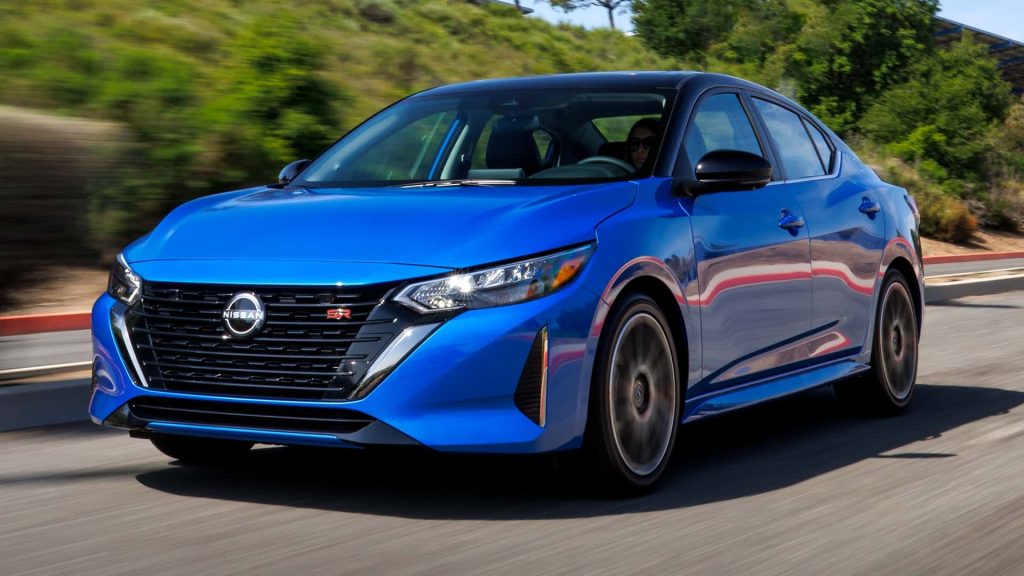
Visually, the Sentra presents a compact, stubby stance thanks to a relatively long 105.7-inch wheelbase, short overhangs, and wide door openings. Updates introduced in the previous model year, such as redesigned headlamps, taillamps, and a refreshed front fascia, carry over for 2011. Additionally, the 2.0 S and 2.0 SL trims now come with an SE-R-inspired rear spoiler.
Inside, the Sentra seats five passengers and offers a total of 97.7 cubic feet of passenger volume. The trunk provides 13.1 cubic feet of cargo capacity, which can be expanded via a large pass-through and 60/40-split folding rear seats—making it practical for larger loads.
Power for the standard Sentra lineup comes from a 2.0-liter inline-four producing 140 horsepower, paired with either a six-speed manual or CVT. The suspension setup includes front struts and a torsion beam in the rear.
The performance-oriented SE-R and SE-R Spec V models raise the output with 2.5-liter inline-four engines that deliver 177 horsepower in the SE-R and 200 horsepower in the Spec V. Both variants include sport-tuned suspensions and larger brakes, while the Spec V also benefits from a limited-slip differential for enhanced traction.
In terms of safety, all Sentras come with front, front-side, and side curtain airbags, along with active head restraints for the front seats. The 2.0 SL, SE-R, and SE-R Spec V trims are additionally equipped with stability and traction control systems, reinforcing the model’s commitment to occupant protection.
No matter which model you go after, always get a pre-purchase inspection from a trusted mechanic—this is your best insurance against buying a money pit. Avoid salvage or rebuilt titles, and prioritize a solid service history over low mileage. Cars in this price range will often have over 100K miles, but that’s not a dealbreaker if they’ve been properly maintained.
In 2025, you won’t get flashy tech or ultra-low miles for under $10,000, but you can still get a reliable, long-lasting ride that won’t empty your wallet in repairs. Be patient, do your homework, and pounce when you find the right one.

